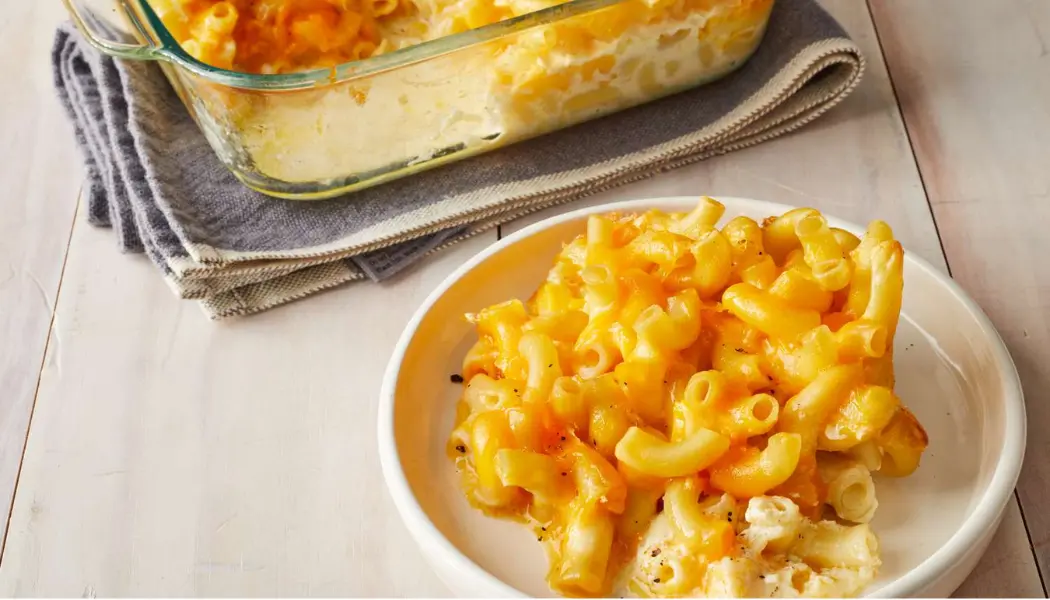Welcome to the ultimate guide on Macaroni and Cheese! Whether you’re craving a nostalgic childhood favorite or looking to elevate a classic dish, Macaroni and Cheese has something to offer everyone. In this article, we’ll explore the rich history of this beloved comfort food, delve into its various iterations, and provide step-by-step instructions for creating the perfect cheesy masterpiece. So, grab your apron and get ready to embark on a culinary journey with Macaroni and Cheese!
Unveiling the Origins of Macaroni and Cheese
The origins of Macaroni and Cheese can be traced back to 14th-century Italy, where pasta and cheese casseroles were commonly prepared by wealthy families. However, it wasn’t until the dish made its way to the United States in the 18th century that it truly gained widespread popularity. Today, Macaroni and Cheese holds a special place in American culinary culture as a quintessential comfort food.
Essential Ingredients for Macaroni and Cheese
Creating the perfect Macaroni and Cheese starts with selecting the finest ingredients. Here’s what you’ll need to whip up this creamy delight:
- Macaroni: Elbow macaroni is the classic choice for Macaroni and Cheese, but feel free to experiment with other pasta shapes for added fun.
- Cheese: Cheddar cheese is the traditional cheese of choice for Macaroni and Cheese, but you can mix and match different cheeses for a unique flavor profile.
- Milk: Whole milk or heavy cream provides the creamy base for the cheese sauce, ensuring a luscious texture.
- Butter: Butter adds richness and depth of flavor to the cheese sauce, creating a luxurious finish.
- Seasonings: A dash of salt, pepper, and paprika enhances the flavor of the dish, while breadcrumbs add a crunchy topping.
Crafting the Perfect Cheese Sauce
The secret to a velvety cheese sauce lies in achieving the perfect balance of cheese, milk, and butter. Here’s how to create a deliciously decadent cheese sauce for your Macaroni and Cheese:
- Prepare the Roux: In a saucepan, melt butter over medium heat, then whisk in flour to create a smooth paste known as a roux.
- Add the Milk: Gradually pour in milk, whisking constantly, until the mixture is smooth and thickened.
- Cheese, Please: Gradually add shredded cheese to the sauce, stirring until melted and creamy.
- Season to Taste: Season the cheese sauce with salt, pepper, and paprika to taste, adjusting the flavors as needed.
Baking vs. Stovetop
While traditional Macaroni and Cheese is cooked on the stovetop, baking the dish adds an extra layer of flavor and texture. Here’s how to choose between the two methods:
- Stovetop: Cooking Macaroni and Cheese on the stovetop results in a creamy, indulgent dish that’s perfect for serving straight from the pot.
- Baked: Baking Macaroni and Cheese in the oven creates a golden crust on top, adding a delightful crunch to each bite. It’s ideal for serving at gatherings or special occasions.
Serving Suggestions and Variations
Macaroni and Cheese is incredibly versatile, allowing for endless variations and serving options. Here are some ideas to inspire your culinary creativity:
- Add-Ins: Jazz up your Macaroni and Cheese with add-ins such as crispy bacon, diced ham, sautéed vegetables, or cooked lobster for a gourmet twist.
- Toppings: Experiment with different toppings such as breadcrumbs, crushed potato chips, or even truffle oil for added flavor and texture.
- Baked Mac and Cheese: For an extra-special treat, try baking your Macaroni and Cheese with a layer of cheese and breadcrumbs on top for a crispy, cheesy crust.
- Vegan Options: For those with dietary restrictions, there are plenty of delicious vegan Macaroni and Cheese recipes available, utilizing plant-based cheeses and dairy alternatives.

Ingredients
Equipment
Method
FAQs (Frequently Asked Questions)
Can I make this meal ahead of time? Yes, it can be assembled ahead of time and refrigerated or frozen until ready to bake. Simply follow the recipe instructions up to the point of baking, then cover tightly and store in the refrigerator for up to three days or in the freezer for up to three months.
How can I make it gluten-free? To make it gluten-free, use gluten-free pasta and replace the all-purpose flour with a gluten-free flour blend in the cheese sauce.
What type of cheese is best for this recipe ? While cheddar cheese is the classic choice , you can experiment with other cheeses such as Gruyère, fontina, or Monterey Jack for different flavor profiles.
Can I use different pasta shapes ? Absolutely! feel free to use any pasta shape you prefer, from shells to penne to fusilli.